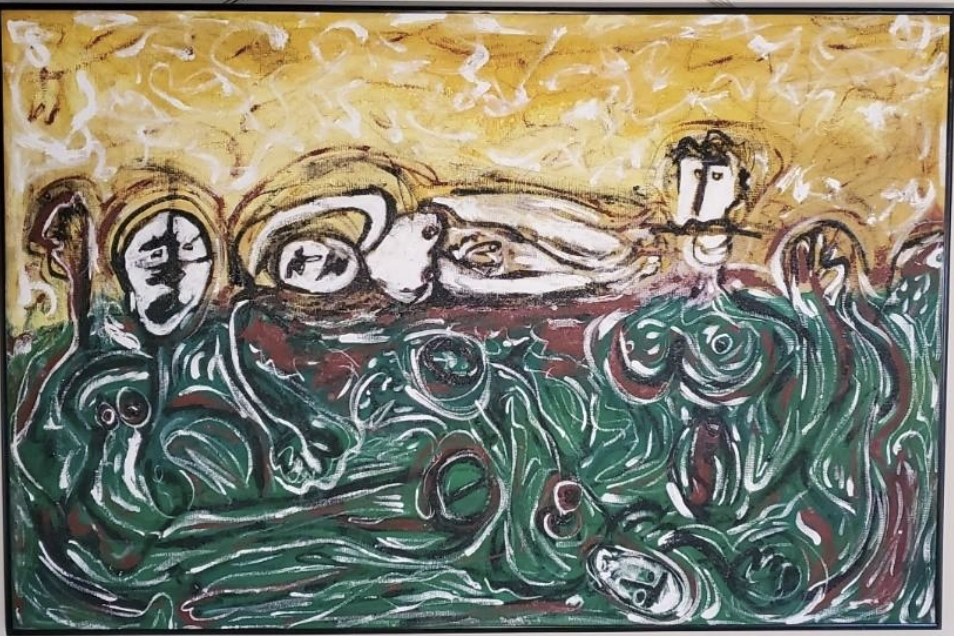Dustin Hall, American, born 1999
The Red Tulips, 2018
In this painting, Hall uses abstraction and color blocking to create an anthropomorphized landscape of queer figures. Painted on the back of a scavenged cardboard poster frame and hung with scrap wire, the painting contains two separate blocks of color, the upper block in yellow and the lower block in green. Within in each block, spirals of other colors swirl to create forms suggestive of penises, vaginas, breasts, and faces. Uniting and blurring the boundaries between the two blocks are three distinct, humanlike figures in white, black, and gray. The bodies which appear in the middle, with their combination of female and male primary and secondary sex characteristics, do not fit cisnormative understandings of biological femininity and masculinity. Just as the figures blur between the landscape and each other, so too do they blur between binary constructions of sex and gender. The abstraction of the lines in the lower half of the painting further enables this sexual and gender ambiguity. Phallic forms whirl into yonic forms which then whirl into breasts and faces and hands until each form is simultaneously recognizable and unrecognizable, disrupting biological binaries of sex and gender (as well as binaries separating humans and nature) to the point where such binaries become incomprehensible. The figure in the center of the painting grounds this chaos, signaling that an alternative to shaky models of binary gender resides in the transcendence of this binary in favor of a body that recognizes the fluidity of gender and sexual categories. Label by Maxwell Cloe

